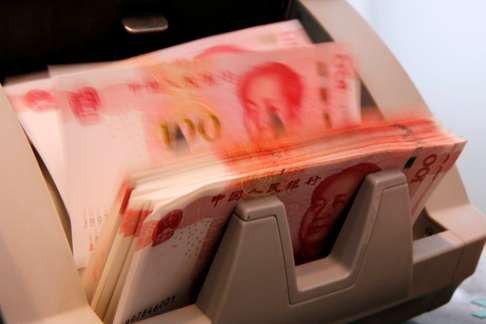
China now rivals US and Europe as growth engine for Asian exports
While Asia is far from being a ‘yuan bloc’, idiosyncratic shocks to the mainland currency cannot be ignored, according to a new report

China is now an equal or even bigger driver of export growth in neighbouring economies than the US and EU combined, marking a significant shift in the economic pecking order since the 2008 global financial crisis.
That’s according to research by Deutsche Bank AG economists who weighed up the influence of the US and China over the rest of Asia through the prism of export growth, as well as the currency and bond markets.
In Taiwan and Indonesia, for example, the growth of China’s gross domestic product (GDP) dominates the US and European Union’s as a source of export demand. In other economies, the trading giants are equally important.
“This is noticeably different from the pre-crisis years when China was much less important –- bordering on irrelevance – as an engine of growth in the region,” Deutsche analysts led by Asia-Pacific chief economist Michael Spencer wrote in a note.
After a rocky start to the year, China has been aided in its growth prospects by a record surge in credit in the first quarter. Key indicators for May are expected to show that the economy is continuing to find its footing and growth is on track to hit the Communist Party’s goal of 6.5 per cent to 7 per cent for 2016.
The International Monetary Fund in April upgraded its China growth forecasts by 0.2 percentage point for this year and next, following signs of “resilient domestic demand” and growth in services that offset weakness in manufacturing.
Beyond the pace of GDP growth, China’s currency gyrations are also increasingly important across the region. While the dollar still drives volatility in most Asian currencies, the yuan is as least as important for fluctuations in the Malaysian ringgit and South Korean won and is growing in significance for other exchange rates, except the Philippines peso.
“Asia is far from being a ‘yuan bloc’, but idiosyncratic shocks to the yuan cannot be ignored,” according to the Deutsche analysts.
The People’s Bank of China (PBOC)surprised traders this week by setting the reference rate at weaker-than-expected levels, helping send the currency to its biggest declines in four months versus a trade-weighted basket that includes the yen and the euro.
The rate’s fixing had become more predictable since early February after the PBOC pledged greater transparency and the yuan increasingly tracked moves in the dollar against major currencies. That was after a sudden weakening of the yuan in January fuelled fears of a devaluation and triggered global market turmoil. During the subsequent three months, the central bank adopted a more market-based system to set the rate and said the basket would play a bigger role.
But the US still dominates in the bond markets, and moves in Treasury yields continue to steer Asian bond trading. And even if Asia central banks don’t match rate tightening by the US Federal Reserve, financial conditions in the region may tighten if US yields increase.
“We find only weak evidence that fluctuations in Chinese yields have any impact on other countries’ bond markets,” the analysts said.
